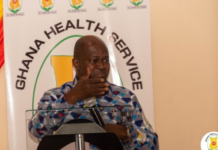Fake drugs are now a multibillion dollar international industry, but for those who have ended up inadvertently taking them the personal consequences can be life-changing.
Natalie-Jade from Manchester was 18 when she decided she wanted to lose weight. The British teenager did a quick Google search, and the pills she found promised instant results.
“The pictures [of the people] looked great,” she says. “Photoshop does wonders for the internet.”
She didn’t think too much about any side effects. “I just thought I was a bit invincible.”
But when she first took them she started sweating more and her heart was racing. She hardly ate, and had to drink lots of water.
After eight weeks she stopped taking them, but the symptoms continued, and two years later she collapsed and ended up in hospital.
The doctors who examined her said her heart rate was so fast it was as though she’d had 30 cups of coffee. They were surprised she hadn’t had a heart attack.
Now aged 26, Natalie-Jade still has occasional heart murmurs.
Last year the UK Medicines and Healthcare products Regulatory Agency (MHRA) shut down more than 4,000 websites selling fake medicines
Natalie-Jade bought her pills online.
Websites offering fake medicines such as the ones that she bought are increasing rapidly.
“A big problem is that many of the websites are hosted in jurisdictions which may not be receptive to takedown requests from a UK government agency,” says Lynda Scammell.
Ms Scammell is senior policy adviser to the UK Medicines and Healthcare products Regulatory Agency (MHRA), which regulates medicines in the UK.
Last year the MHRA took down more than 4,000 websites selling fake medicines, up from just under 1,400 websites in 2015.
In 2016, more than £13.6m worth of fake medicines and medical devices were seized in the annual operation organised by Interpol, including three million doses of erectile dysfunction pills and more than 300,000 doses of slimming pills.
Fake medicines for life-threatening conditions, including breast cancer, bone cancer and leprosy were also taken.
Ms Scammell says “an embarrassment factor” is contributing to the problem, with people wanting to buy slimming or erectile dysfunction drugs online instead of in person.
But there is also a convenience factor.
“People get used to ‘I want it, I want it now’,” she says.
The end result is that fake drugs are now a multibillion dollar industry, according to the World Health Organization.
But it is not only a problem outside of official channels. Fake drugs can also make their way into legitimate supply chains.
The global nature and complexity of the supply chain increases the risks of that chain being infiltrated.
For example, one dose of a pneumococcal vaccine made by a large drug firm involves 1,700 people and more than 400 raw materials. From start to finish, this process takes more than two-and-a-half years.
“It is one of the most technically complex vaccines to manufacture and we produce it in many parts of the world,” the firm says.
In 2007 fake medicines got into the NHS, with the MHRA forced to issue four emergency recall notices in a matter of days. More recently in 2011, fake versions of Roche’s multibillion-dollar cancer drug Avastin made their way into the US healthcare system.
The big drugs firms say they have cleaned up their act since then and that their supply chains are safe.
They are reluctant to discuss the security measures they’ve taken for fear of revealing their methods to the very counterfeiters they are trying to prevent. But processes can include having dedicated testing laboratories using packaging and printing that make counterfeits more easy to spot.
But the problem is that in some countries, manufacturers “will buy from sources they can’t trust”, says Michael Deats, World Health Organization group lead on substandard and falsified medical products.
“That’s dangerous,” he says.
An outbreak of meningitis in Niger led to a proliferation of fake drugs
West and Central Africa and South East Asian countries in particular have problems with criminals being able to sell fake drugs to licensed distributors, who then sell them on to places people trust, such as hospitals and pharmacies.
The criminals behind the fake drugs increase the supply when there’s a big demand. An outbreak of meningitis in Niger, for example, led to a shortage of vaccines, which was responded to quickly by the fakers, Mr Deats says.
“Natural disaster, war, civil unrest – it’s a business opportunity,” he says.
The criminals behind many fake medicine operations can be highly organised, but are probably not what everyone thinks of as being part of “organised crime” – gangsters with interests in narcotics and guns, says Mr Deats.
He says they are more likely to be rogue businessmen, who may have worked in legitimate pharmaceutical supplies, and who know the systems.
They’ll often deal through offshore companies locked up in tax havens, and have the wherewithal to produce millions of doses of a particular fake medicine.
“These are very sophisticated networks,” he says. “You see a fair bit of investment in some cases… industrial-scale production.”
It’s not in their interests to be discovered, so rather than obviously poisoning people, which would attract attention, it’s far better to make medicines with ineffective ingredients.
“These are tough to identify. These medicines visually look like the real thing,” he says.
“But they just don’t work.”
So if someone then dies of a disease like malaria, it’s assumed that they didn’t respond to the treatment, rather than the treatment being fake, he says.
“It is a low-risk activity, and it’s lucrative. Of course that’s going to attract the wrong sort of people,” he says.
“The risks of capture are low, and the profits are high.”
But for those who have taken fake drugs, such as Natalie-Jade, the consequences can be life changing.
Natalie-Jade’s advice to people like her who are trying to slim is to go through the proper channels rather than trying to find a quick fix online.
“Don’t believe that you’re invincible,” she says.




![Captain Effah Dartey shares health ordeal [Listen] Nkrabea Effah Dartey](https://www.adomonline.com/wp-content/uploads/2024/08/bbbb-Copy-218x150.jpg)

